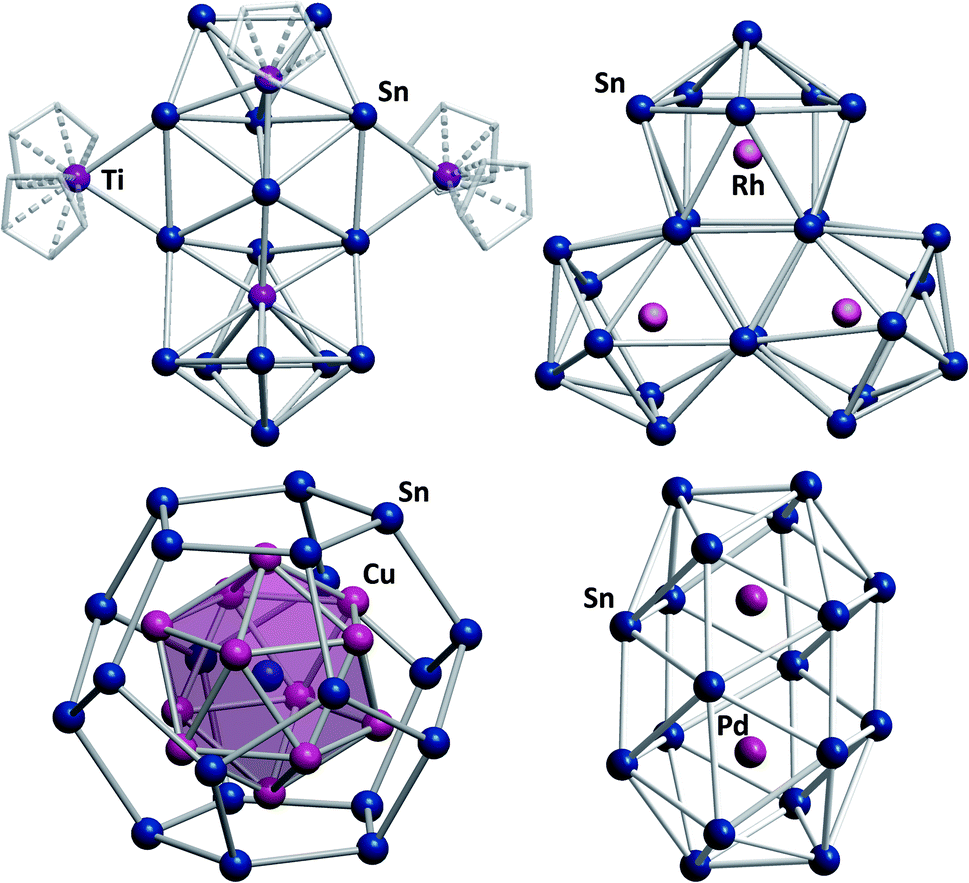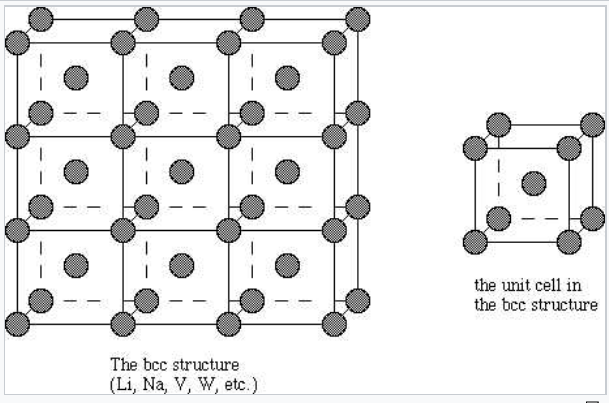The tin atom is pentacoordinate with the two oxygen atoms forming the apices and the two methyl groups and nitrogen atom forming the equatorial plane of a distorted trigonal bypyramid. The predominant coordination polyhedron for tin is a SnO 3 triangular pyramid although a minority of Sn 2 are in a SnO 4 square pyramid environment.

Metal Cluster Compound Wikipedia
The diamond cubic structure is tetrahedrally coordinated which means that each atom has 4 bonds.

12 coordinated structure of tin. The fraction of Sn 2 in a SnO 4 square pyramid environment decreases as the tin content is increased. Thats why the other elements that form diamond cubic crystals are also in group 14. The structure involves two types of tin both with octahedral coordination three types of fluorine atoms two bridging one terminal all equatorial and two types of methyl groups both axial.
The tin atom lies on a crystallographic threefold rotation axis and is coordinated by three water molecules as a trigonal pyramid Fig. The perchlorate tetrahedra are located in the gaps between the SnO 3 pyramids on their own threefold axes. Coordination 12 074 2D Projection Top layer Middle layer Bottom layer Chapter 3-12.
2 the one dimensional 1D TiN nanowire structure provides an efficient medium to accelerate redox electron transfer in LiPS. The tin IV atom is coordinated in a distorted octahedral manner by the four bromine atoms and two sulfur atoms. If Sn is considered as 12-coordinated SnSO 4 has a structure similar to barite BaSO 4 and its structural parameters are intermediate between those of BaSO 4 and PbSO 4.
Characteristic Reactions of Alkyl halide are substitution and. The element has two allotropic forms at normal pressure. The tinIV atom is coordinated by four nitrogen atoms in a square-planar fashion with an average Sn-N p bond distance of 20819Å and the coordination sphere is completed by two axial chloro ligands with an average Sn-Cl bond distance of 24355Å Cl-Sn-Cl 1800 1.
The asymmetric unit consist of half a formula unit with the tin IV atom at the centre of symmetry at 0012 Wyckoff symbol b and a centrosymmetric 14-dithiane molecule with the centre of symmetry in 1201 Wyckoff symbol c. Structures properties and coordination chemistry of tin porphyrins 31 Comments on the spectroscopy of tin porphyrins 32 Crystal structures. The bond lengths involving the tin atom are Sn-O 21086 and 21306.
Structure 1 near here. The tin coordination found in this study shown in Figure 5a results in a value for this distance of 21 A. 12 and also by Lemke and Lorenz in 1999 13 so redox potentials.
This packing factor is actually higher than the diamond cubic packing of gray tin which is why the transformation from white tin to gray tin results in a volume expansion that. Alkyl and Aryl Halides Chloroquine is used to treat Malaria Structure of Alkyl Halides Boiling Point Interesting Alkyl Halides Preparation of Haloalkanes Haloarenes 38 min. Stacking Sequence 3D Projection A sites B sites A sites Adapted from Fig.
The newly proposed cathode possesses a couple of following advances. From that in the structure proposed by Maksimova and Ilyukhin. 2561 5 Å and Sn-S distances 26546 6 Å are in the typical range for octahedrally coordinated tinIV atoms and the dithiane molecule adopts a chair conformation.
Based on colligative studies the trimethyltin chloride pyridine adduct Figure 1 was the first documented five-coordinate triorganotin halide complex that was proven by X-ray crystal structure 5. On warming gray or alpha tin with a cubic structure changes at 132C into white or beta tin the ordinary form of the metal. Frankland was the first chemist to synthesise an organometallic Compound dimethylzinc CH32Zn in 1848.
The Schiff base ligand is thus tridentate. Ming-Hui Cong Kui-Rong Ma Yu-He Kan Xiao-Xue Dong Structure spectroscopy and DFT studies of a novel one-dimensional CuII-diphosphonate coordination polymer Journal of the Iranian Chemical Society 101007s13738-014-0475-x 12 2 205-211 2014. Quantitative information of the coordination structure of the tinIV complex.
Though divalent tin compounds had known. 1 Table 1 The perchlorate tetrahedra are located in the gaps between the SnO 3 pyramids on their own threefold axes. The white tin crystal structure is a tetragonally distorted version of the diamond cubic crystal structure.
The average SnO 12 distance is 293914 Å. 1 highly exposed 200 facets with five-coordinated Ti active sites have a strong adsorption capacity with LiPSs which would promote the utilization of sulfur and restrain the movement of LiPSs. The tin coordination described by them and shown in Figure 5b seems unliely as it results in an unacceptably short oxygen-oxygen distance of 15 A between O1 and O2.
The coordination chemistry of tinIV with hydroxide ions. In the field of inorganic coordination complexes it is the geometrical pattern formed by the atoms in the ligands that are bonded to the central atom in a molecule or a coordination complexThe geometrical arrangement will vary according to the number and. The geometry around the tin is a distorted pentagonal bipyramid with the methyl group axial two dithiocarbamate ligands equatorial and one dithiocarbamate bridging axial-equitorial.
The most notable material with a diamond cubic structure is of course carbon in diamonds. Silicon germanium and α-tin can form the diamond cubic structure. Structural commentary The tin atom lies on a crystallographic threefold rotation axis and is coordinated by three water molecules as a trigonal pyramid Fig.
In organ tin compounds is capable of extending its coordination number beyond four. The crystal structure consists of discrete neutral mononuclear seven coordinated tin complexes. White tin has a tetragonal structure.
The tinIV atom is coordinated in a distorted octahedral manner by the four bromine atoms and two sulfur atoms of two 14-dithiane molecules in a trans-position. However the Sn 2 cation has a pyramidal 3-coordination to O atoms and the average SnO 3 22711 Å. The coordination geometry of an atom is the geometrical pattern formed by atoms around the central atom.
Sn-C 2101 and 2121 Å. The compound C6H5Ti OC3H73 is an organometallic compound because it contains a Ti-C bond C6H5-Ti in the compound. The crystal structure of this complex has been determined at room temperature.
When tin is cooled below 132C it changes slowly from white to gray. Programs in its PC version12 Selected crystal and experimental data is summarized in Table 1. A similar arrangement of the perchlorate tetrahedra can be observed in the crystal structure of BaClO 4 2.

6 4 Crystal Structures Of Metals Chemistry Libretexts

No comments